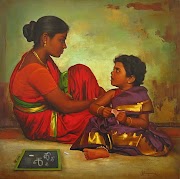Introduction
Few artists in history have captured the soul of beauty like artist Michelangelo. His genius shaped the Renaissance, an era that celebrated creativity, humanism, and divine art. Through his paintings, sculptures, and architectural brilliance, Michelangelo Buonarroti defined the true essence of renaissance art.
 |
| Michelangelo Buonarroti |
Michelangelo Biography: A Glimpse Into His Early Years
Born in 1475 in Italy, Michelangelo Buonarroti grew up in a time when Europe was witnessing the rebirth of knowledge. From childhood, he loved sketching and sculpting. His father wanted him to pursue a practical career, but his passion for art was unstoppable.
He trained at the Michelangelo Bottega, where he learned the techniques that defined renaissance style. There, he studied anatomy, perspective, and proportion, skills that became vital in his later masterpieces.
Art During the Renaissance
The period of Renaissance was more than an artistic movement. It was an awakening of the human spirit. Artists studied nature, emotion, and the human body to create lifelike figures. Renaissance artwork aimed to balance faith and beauty, science and emotion.
Artist Michelangelo embodied this philosophy. His work expressed the divine perfection of the human form, making him one of the greatest artists in the Renaissance period.
Michelangelo and the Pope
One of the most legendary moments in his career came when Michelangelo and the Pope collaborated. Pope Julius II commissioned him to paint the Sistine Chapel ceiling. Though Michelangelo saw himself more as a sculptor, he accepted the challenge.
 |
| Sistine Chapel ceiling |
The result? One of the famous Renaissance paintings in history. Michelangelo’s most famous painting, The Creation of Adam, captures God reaching out to give life to man. This powerful image symbolizes the heart of renaissance art — humanity’s divine potential.
 |
| The Creation of Adam |
Michelangelo Sculpture: Carving Life into Stone
If painting was his challenge, sculpture was his true calling. His Michelangelo sculptures, like David and Pietà, are masterpieces of Italian Renaissance artwork. Each figure seems to breathe and feel. The flawless anatomy, emotional depth, and perfect proportion turned marble into poetry.
 |
| Pietà by Michelangelo |
His “David” represents courage and human perfection — the spirit of the Renaissance itself. Meanwhile, the Pietà shows his emotional depth, making it one of the most loved Renaissance artworks ever created.
 |
| David by Michelangelo Buonarroti |
Renaissance Paintings and the Age of Renaissance
The age of Renaissance was all about rediscovering beauty. Renaissance paintings focused on realism, light, and movement. Artists experimented with renaissance oil painting, developing depth and texture that brought art to life.
Michelangelo art stood apart because it combined strength with beauty. His use of perspective and anatomy made every piece of renaissance artwork timeless.
Michelangelo’s Influence on the High and Late Renaissance
The high Renaissance was defined by balance, harmony, and perfection. Michelangelos led this movement with unmatched creativity. His designs and compositions inspired others, including Raphael and Leonardo da Vinci.
As the late Renaissance art evolved, his dramatic style influenced baroque artists who admired his boldness and realism. His legacy bridged generations and transformed era Renaissance thinking forever.
Michelangelo Buonarroti: The Architect of Genius
Beyond sculpture and painting, Michelangelo’s architectural brilliance shined through projects like St. Peter’s Basilica. His work defined the renaissance era years, showcasing elegance and power in every line.
Each structure reflected the ideals of renaissance style — symmetry, proportion, and grandeur. Through architecture, he gave renaissance art a new dimension.
Legacy That Transcends Centuries
Artist Michelangelo left behind a treasure of famous Michelangelo paintings, sculptures, and designs. His life was a story of persistence and perfection. The lessons from his michelangelo biography remind us that art is not just talent — it’s devotion.
From the Michelangelo Bottega to the grandest churches of Rome, his journey defined the renaissance year and beyond. His art remains a living memory of faith, passion, and creativity.
Conclusion
Every masterpiece of Michelangelo Buonarroti carries the spirit of the Renaissance. His hands shaped stone and color into eternal beauty. His vision continues to inspire millions who admire renaissance artwork today.
Truly, artist Michelangelo wasn’t just part of the Renaissance — he was its heart.



















0 Comments